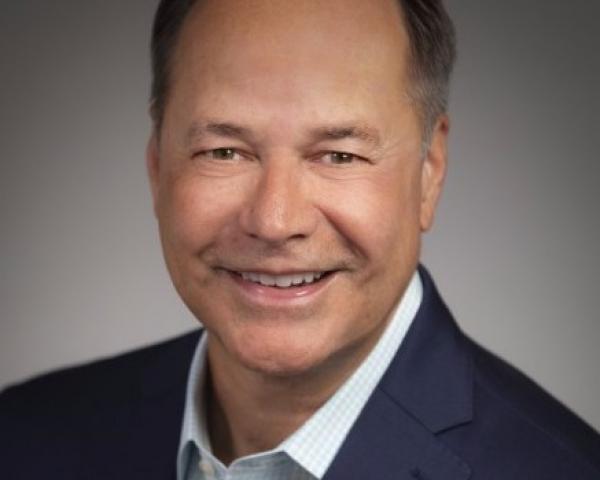Most people still think in terms of returning to work and life as we knew it once the pandemic is over. Meanwhile, return-to-office plans continue to be disrupted, impeding any real chance to test out hybrid models, which many have held out hope for as a longer-term solution. Return to work and life as we once knew it is increasingly improbable for two main reasons: Work in the future will never again resemble what it did in the past, and there will be no “all clear” sounded to signal the end of the pandemic. It will likely linger until herd immunity is reached, and the virus will continue to mutate until then.
But there is good reason for optimism – great news, in fact – about these two new realities. Ever since man discovered fire and invented the wheel, when we need to evolve we leverage human ingenuity and technology to make work and life less stressful, more productive and safer than it ever has been. Although chaotic, most companies and organizations passed the test of shifting to and sustaining remote working. And much of this happened on an emergency basis with little planning or design. Imagine how much more effective could be more thoughtful and deliberate strategies for future-forward work environments.
Because we work in the broad insurance ecosystem, we will make references to how the future of work may affect these segments with a focus on inside work, but there will be no industry or business segment unaffected by these changes.
Short-Term Impact
Workers and their employers have learned that working from home is not only possible but preferable whether permanent, complete or partial. Corporations, including insurance companies that have relied on a “brick and mortar” infrastructure for over a century, are subletting and selling off headquarters and regional properties, cutting overhead and preparing for a work-from-home model for a majority of their workforce. Additionally, office space is shrinking, and work spaces are being redesigned in “hoteling” models in which full-time and hybrid employees reserve available fully equipped work areas for their time and meetings in office. Corner and window offices are becoming fewer; relics of the past.
Several factors have conspired to drive unprecedented migration from cities to suburbs and beyond. This is a consequence of the combination of health-based fear of living in the close quarters of an urban lifestyle and reluctance to use public transportation, as well as fear of violent crime. People who have migrated to suburbs are not likely to return to the city or their workplaces anytime soon.
Working from home, setting aside its many attractions to workers, also has its challenges.
See also: Tomorrow’s Insurance Is Connected
Screen fatigue has set in, not only from the endless series of video chat meetings but also from the lack of physical contact and camaraderie – the “watercooler” chats. Leaders are challenged with onboarding new employees remotely and are concerned with everything from gauging productivity to visibility, spontaneous innovation and sustaining organizational culture. In response, some companies are beginning to offer mental health and wellness support services to staff who appear to need it or want it.
On top of these downsides, companies are experiencing worker shortages as some have moved to the unemployment sidelines and others are resigning in ever greater numbers as they find new careers from the freedom of their home office desks with companies that offer more appealing opportunities, including new digital approaches to workforce management and collaboration.
The New Workforce
Millennials are the largest generation in the workforce, and Gen Z is the only other generation whose representation in the workforce is growing. According to research from Aon, Gen Z makes up 20% of the U.S. population, while millennials account for 50%. Businesses need to understand these changes, tailor business models and focus their attention toward understanding the employment preferences of younger generations mixed in with an aging insurance workforce.
In 10 years, Gen Z will make up 20% to 30% of the workforce – if our industry hopes to attract these future workers, digitization and transparent communication will be essential. Younger generations are less reluctant to voice their opinions or to be vocal agents for change, and working in a distributed model can make opinion and idea sharing even more difficult.
ACORD, the non-profit, insurance industry-owned organization, has done research showing that the insurance industry ranks below mining and manufacturing when it comes to attracting, developing and retaining young talent, even though insurance value systems align with those of millennials and Gen Z.
“Gen Z is more comfortable in an online ecosystem than other generations, millennials included. Being digitally native is a unique characteristic of this group and something that is really going to mold the experiences companies will create for them,” said Dave Zeornes, sales leader at Aon Programs.
Recent graduates don’t want to work with obsolete technology or deal with paper anymore. “Gen Z is more open to change than any other generation,” Zeornes added. “They have the opportunity to build on what previous generations have done, revolutionize and change the world of insurance. It’s the responsibility of the current people in the industry to recruit new talent with fresh ideas -- the future of insurance lies on the shoulders of Gen Z.”
In addition, upskilling of the older segment of the workforce is becoming imperative as new technologies are performing lower-level, repetitive tasks, leaving employers to capitalize on the experience and judgment of displaced workers through retraining. The demand for, and value of, collaboration among work teams is paramount during these changing conditions.
Collaboration to the Rescue
Virtual collaboration tools and platforms are quickly emerging as one of the key solutions to these challenges.
We first learned about the Balloon collaboration platform when a colleague sent us an article titled "Dartmouth Transforms Its Candidate Evaluation Process With Balloon." You can read the whole piece here. But what really grabbed our attention was this statement – “Balloon reduces meeting time by 70%.” Can you imagine the value of that savings multiplied across all meetings in all industries?
This led to a discussion with Balloon’s founder Amanda Greenberg to learn more. Balloon is a platform that unlocks ideas, feedback and insights by eliminating groupthink from collaboration and amplifying unheard voices in the workplace. The platform is used by teams and companies of all sizes, including Amazon, MasterClass, VMware and Google. Balloon’s workflow helps facilitate frictionless cross-team collaboration, boosts productivity and makes synthesizing information and identifying top priorities easier — so they can make better decisions, faster, ultimately resulting in more revenue-generating actions. Increasing meeting efficiency alone is crucial to forward-looking work strategies.
See also: Big Opportunities in Insurance Ecosystems
The following recent quote nicely summarizes Balloon’s design concept. It is from Betty Liu, the noted author and journalist who also partners with Balloon as a template author: “Arguing your point starts a debate. Asking questions starts a dialogue.”
As organizations embark on the largest social experiment in human history, our new normal — or normal of now — requires a focus on culture, purpose, trust and psychological safety. While the pandemic’s effects continue to accelerate our future of work and expedite our human transformation to digital creation, they impose even greater burdens on digital leaders to inspire, motivate and adapt human potential. Employers are implementing flexible organizational structures, virtual and asynchronous collaboration tools, and empathetic leadership to create effective hybrid workplaces.
We will continue to identify and share with our readers and clients new and emerging technologies such as Balloon that will enable companies of all sizes and types to transform, adapt to the new future of work and leverage the people they employ in very new and more effective ways.









